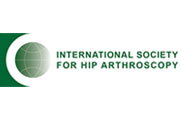Thomas Youm, MD - News
Categories
Postoperative management after total hip and knee arthroplasty
Despite major advances in the field of total joint arthroplasty, a standardized postoperative management protocol currently does not exist following total hip arthroplasty (THA) and total knee arthroplasty (TKA). A survey was mailed to the active members of the American Association of Hip and Knee Surgeons to investigate issues such as postoperative rehabilitation and activity restriction.
Os acromiale: evaluation and treatment
Os acromiale is a developmental aberration in which the distal acromion fails to fuse. This aberration is often discovered incidentally but may present with a clinical picture similar to that of subacromial impingement syndrome. Treatment for symptomatic os acromiale is initially nonoperative-activity modification, physical therapy, corticosteroid injection, use of nonsteroidal anti-inflammatory medication.
Arthroscopic versus mini-open rotator cuff repair: a comparison of clinical outcomes and patient satisfaction
This study compares the results of arthroscopic and arthroscopically assisted mini-open rotator cuff repair in a series of 84 patients who underwent repair of small, medium, or large tears between March 1997 and September 2001 with at least 2 years of follow-up.
Treatment of patients with spinoglenoid cysts associated with superior labral tears without cyst aspiration, debridement, or excision
PURPOSE: To describe a case series of 10 consecutive patients with spinoglenoid cysts and associated superior labral tears treated by labral repair performed by the same surgeon without formal cyst aspiration, debridement, or excision. METHODS: Ten patients with spinoglenoid cysts and associated superior labral tears demonstrated on preoperative magnetic resonance imaging (MRI) were retrospectively reviewed. Evidence of weakness on examination was further evaluated through nerve conduction studies.
Orthopedic management of decubitus ulcers around the proximal femur
Decubitus ulcers, commonly known as pressure ulcers or sores, represent localized areas of tissue necrosis. Despite increased awareness and use of preventive measures, these ulcers remain a major concern in the hospitalized and immobile patient population.












